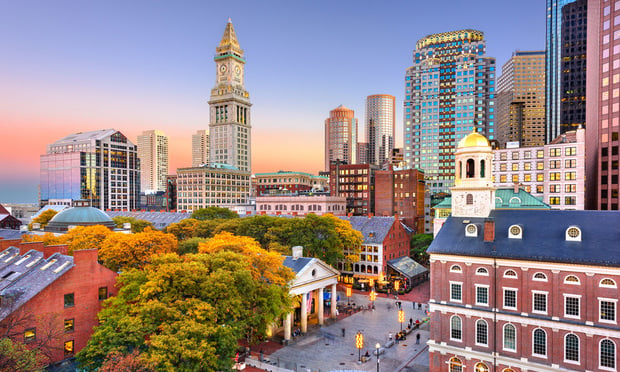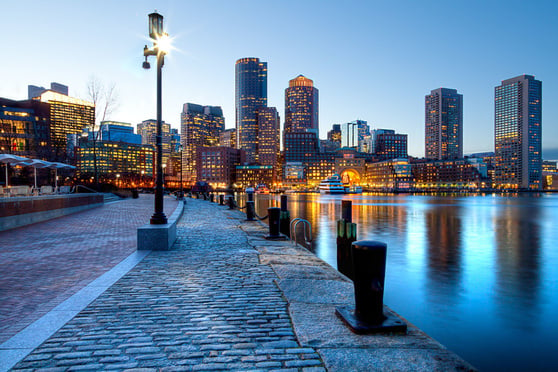Ronald K. Perry, who spoke about the city market, identified the South Boston waterfront area as a catalyst for growth. While average vacancy rates in the city were at 2.2% for last year, vacancy rates on the waterfront were at 11% last year, due to the new construction there. Perry also noted that while conditions in Boston this past year were unprecedented, tenants are hoping some relief is in sight. Rental rates increased by an average of 18% with class A space going for an average of $65 per sf and the high-end markets soaring to $100 per sf. The volatility in the market is demonstrated by the absorption rate for last year, which was 1.5 million sf of space.
Last year also saw very limited options for tenants, with several tenants often vying for the same space. An early indication of the market settling down is that more options, including sublease space, are opening up. "Last year, if you wanted 25,000 sf of space you had maybe seven options," noted Perry. "This year you have 14 options."
The sublease market, which was a non-issue last year, is suddenly approaching 700,000 sf, mostly due to high-tech companies that over committed. Noting that 85% of leased space here is by traditional companies, Perry emphasized that it is these companies that are responsible for most of the market here and that that will continue to be true.
Joseph P. Flaherty, senior vice president for Meredith & Grew, noted that the Cambridge market is split between the biotech/lab space and the office market. While the former market continues to demonstrate strong demand and no vacancies, the office space market in Cambridge has cooled. "A few months ago, there were no options or there were bidding wars," he said. "Now there are ten spaces to choose from." He attributes this to the high-tech fallout, which increased the vacancy rate from nothing in 2000 to 3.4% now. These office vacancies don't help the need for biotech space as those tenants have very specific needs.
Flaherty also emphasized the migration from Cambridge, which was 1.2 million sf this year, mostly of e-commerce type businesses. But the transaction velocity for Cambridge this year was very high at 2.9 million sf and there is currently two million sf under construction. While rents increased between 35% to 65%, says Flaherty, "It's clear that's over." He predicts that office vacancies will continue to rise here while there will continue to be good demand for biotech space, with larger firms digesting whatever is put on the market.
In the suburban market, the absorption rate was a very high eight million sf this past year, noted Elcock. Rental rates increased by 35% and the vacancy plummeted from 9.3% to 4.4% in one year. There are currently 33 buildings under construction and a number of campus-style complexes were built. The slowdown, says Elcock, "will mean a normal rate of growth of eight to 10% instead of 20%. The market here will still be great."
Rental rates will drop off, new construction will slow by a third, predicts Elcock, and the absorption rate will return to normal. The vacancy rate will stay in the single digits in the suburban market and will mostly be the result of sublease space. Perhaps most important, the credit of tenants is going to become crucial to a deal.
"This is the year we will return to the basics," says Elcock. "Fasten your seatbelt, observe the speed limit and proceed with caution."
Want to continue reading?
Become a Free ALM Digital Reader.
Once you are an ALM Digital Member, you’ll receive:
- Breaking commercial real estate news and analysis, on-site and via our newsletters and custom alerts
- Educational webcasts, white papers, and ebooks from industry thought leaders
- Critical coverage of the property casualty insurance and financial advisory markets on our other ALM sites, PropertyCasualty360 and ThinkAdvisor
Already have an account? Sign In Now
*May exclude premium content© 2024 ALM Global, LLC, All Rights Reserved. Request academic re-use from www.copyright.com. All other uses, submit a request to [email protected]. For more information visit Asset & Logo Licensing.








